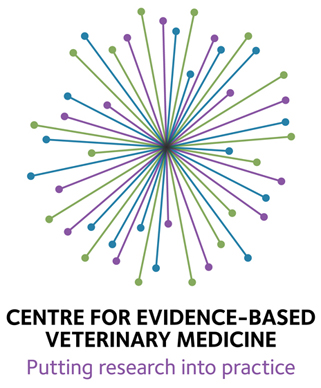Acupuncture is arguably one of the more popular alternative therapies, after dietary supplements and chiropractic. The mystical explanations for its supposed benefits, such as balancing the mysterious energy force known as Ch’i, are not generally accepted in the mainstream medical community. But there are a fair number of healthcare providers who believe acupuncture has meaningful clinical benefits, and some individuals make attempts to explain these in more conventional scientific terms. In my opinion, the evidence is still most consistent with the position that acupuncture is an elaborate placebo that affects how people feel without truly altering the state of their physical health. But there is room for debate about the effects of sticking needles in patients.
Regardless of the issue of whether or not acupuncture is a beneficial therapy in some instances, however, many of the claims made to promote it are clearly exaggerated or simply false. In the veterinary field, for example, it is often claimed that acupuncture has been used to treat animals for thousands of years. Yet a close look at the actual historical record shows this to be untrue. And while acupuncture is more popular than some other alternative therapies, its popularity is routinely exaggerated, and conventional therapies are preferred even in China and other places where acupuncture has been a generally accepted practice for some time.
A recent article in the Journal of Integrative Medicine provides some interesting information concerning on of the most common claims made for acupuncture—that it was a popular and successful therapy in ancient China for thousands of years. The author, a practitioner and advocate for so-called Traditional Chinese Medicine (TCM), makes the case that acupuncture was actually a marginal practice in ancient China and that its current popularity is a recent, 20th century phenomenon. Though the author probably wouldn’t agree, it strikes me that this fits quite well with the hypothesis recently discussed in Slate magazine that TCM is not actually an ancient historical method but an ad hoc collection of unrelated, even competing practices pulled together in a bit of nationalist historical revisionism by Mao Tse Tung.
Lehmann H. Acupuncture in ancient China: How important was it really?J Integr Med. 2013; 11(1): 45-53.
The abstract summarizes the author’s conclusions that acupuncture was never a popular or important therapy even in ancient China.
…the clinical application of the needle therapy in ancient China was always a limited one. From early times there have been warnings that acupuncture might do harm. In books like Zhang Zhongjing’s Shanghanlun it plays only a marginal role. Among the 400 emperors in Chinese history, acupuncture was hardly ever applied. After Xu Dachun called acupuncture a “lost tradition” in 1757, the abolition of acupuncture and moxibustion from the Imperial Medical Academy in 1822 was a radical, but consequent act. When traditional Chinese medicine was revived after 1954, the “New Acupuncture” was completely different from what it had been in ancient China.
Of course, the author puts a positive spin on these conclusions, suggesting that the marginal role of acupuncture historically doesn’t negate its benefits (despite the fact that these are often justified by claiming a long, successful history) but simply, “The best time acupuncture ever had was not the Song dynasty or Yuan dynasty, but is now – and the future of acupuncture does not lie in old scripts, but in ourselves.”
The author reviews the written records of ancient Chinese medicine and concludes that while there is discussion of the theory and practice of acupuncture, there is no evidence that it was widely accepted or employed. He also discusses the artifacts often cited as evidence of ancient acupuncture practices and why they do not support the idea that an intervention similar to modern acupuncture was widely used. The author also identifies several mentions of the risks of historical acupuncture, which include the same problems of infection and organ damage that still occur today.
And although people in ancient time knew nothing about microbes, they knew very well that needling could do harm to the body. For example, the Zhenjiu Juying talks about “poison” contained in iron.
Moreover, there were always warnings of the dangers of the needling. As early as in 81 BC, the Yan Tie Lun criticizes incompetent physicians with the words: They
stab in their needles at random, without the least beneficial influence on the illness, and only succeed in injuring the flesh and the muscles. And Wang Tao writes in his Wai
Tai Mi Yao: Acupuncture can kill healthy people, and cannot revive those who are dead. If one desires to adopt this technique, I am afraid he will harm life. [Therefore] at this present compilation I do not adopt [the technique of ] the Acupuncture Classic, I only adopt moxibustion.
He then goes on to cite prominent ancient Chinese medical authorities to illustrate that they rarely recommended acupuncture and sometimes recommended against it. And he emphasizes that while the best and most esteemed therapies would have been employed for the emperors in ancient China, it appears the emperors almost never received acupuncture.
He also makes a particularly interesting point that claims about acupuncture as an ancient “lost art” may simply be part of the tradition of complaining that previous generation possessed medical skills and techniques that have been lost and must be rediscovered:
…when Xu Dachun in 1757 lamented acupuncture as a “lost tradition”, this is only a proof that it was not widely used at his time. It does not prove that it really had been very important before. Remember: complaining that the medical art of the ancients was lost has been part of Chinese medical writing from its very beginning – the Huangdi Neijing itself does nothing else.
This seems consistent with the ubiquitous human tendency to imagine the past as a Golden Age better than the present. Certainly, this is a mainstay of the marketing of alternative therapies, which are often promoted as a rediscovery of or return to better ideas and approaches despite the convincing evidence that human beings today enjoy the longest and healthiest lives of any who have ever lived.
Finally, the article discusses an event often ignored or downplayed by acupuncture advocates who wish to portray the modern practice as a well-established and historically continuous practice handed down from ancient times, rather than a politically motivated invention of the 1950s communist leadership. In 1822, the emperor officially prohibited acupuncture from being taught or practiced at the Imperial Medical Academy.
Emperor Daoguang, in the second year of his reign and at this time 40 years old, declared: Acupuncture and moxibustion, as not being suitable to be applied to the Emperor, will be banned forever from the Imperial Medical Academy.
This move is sometimes portrayed as the result of Western influence, however the author of this article claims that the move predates any significant influence of European medicine on China:
One reason which makes it so interesting is the time of the decree: this was the last period in Chinese history where medical aspects were discussed WITHOUT comparing TCM to scientific medicine.
Indeed, the conflicts with Western countries had already begun. However, it was not before 1830 that the foreign missionaries adopted “the idea of making the practice of medicine an auxiliary in introducing Christianity to China.”
Whatever came later (for example Wang Qingren’s Yi Lin Gai Cuo in 1830, in which he attempted to correct some of the many errors in TCM literature) could not escape the everlasting struggle in which traditional practitioners tried to defend TCM theory against the superior methodology of scientific medicine. We might say: Banning acupuncture from the imperial court was the last independent act in the history of traditional Chinese medicine.
Furthermore, he argues that the ban was almost certainly not a whim on the part of the emperor, but a considered rejection of the practice by the most prestigious Chinese scholars of the day:
In fact, it is unlikely that the idea of the edict originally came from the emperor himself…Like today, such things were left to a court commission. There, specialists discussed the matter and presented a suggestion.
…So, we can be sure that there were extensive discussions among court advisors, physicians and teachers of the Imperial Medical Academy before the edict was decided. And we may believe that the men deciding this question were the most learned scholars of their time. Even if some of them were no medical experts we can be sure that they listened very carefully to what the physicians and the teachers of the Imperial Medical Academy said.
And if this commission nevertheless recommended the abolition of acupuncture, we can be sure of one thing: that they saw very good reasons to do so.
This author also argues that there was no outcry against this edict from the physicians of the day, suggesting that acupuncture was not widely valued in the medical community. And there appears to be little evidence of acupuncture being commonly used in China after the 1822 edict, until “re-invented” in the 1950s. His conclusion starkly contrasts with the usual acupuncture mythology:
When acupuncture was revived after 1954, this was no continuation of an unbroken tradition,but in fact a completely new invention… the methods and experience of ancient acupuncture are mostly irrelevant for us.
Now clearly, it is irrelevant how old acupuncture is or how commonly practiced it was in ancient times to the issue of whether or not it works. If it were true that modern acupuncture were a revival of a long-standing ancient practice, this wouldn’t be evidence that it was safe or effective any more than the long history of bloodletting somehow validates that therapy. However, from a marketing point of view, people appear to find the claims made for modern acupuncture more palatable or believable if they imagine it as the revival of ancient wisdom, instead of a politically motivated invention of the 1950s. It may be useful, therefore, to recognize this as an unsubstantiated myth that does not help us in evaluating the risks and benefits of acupuncture today.










